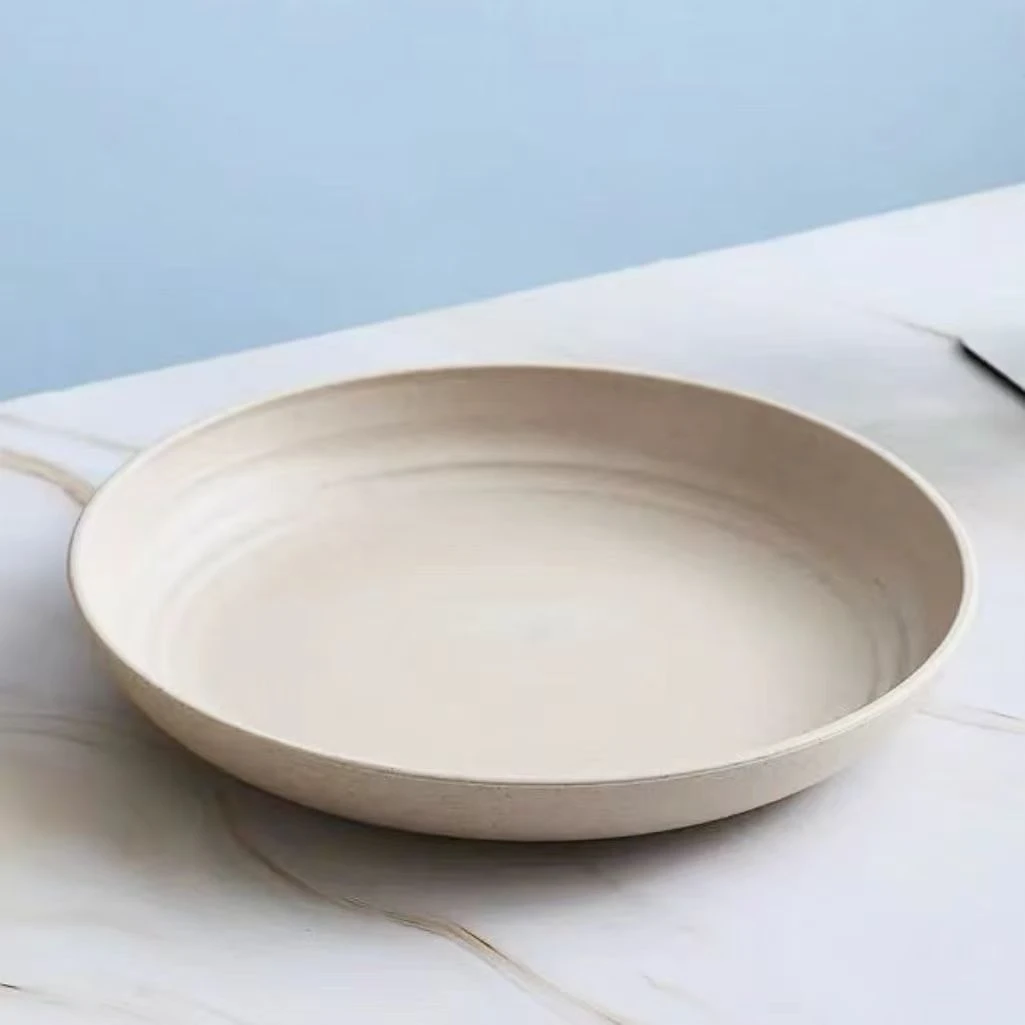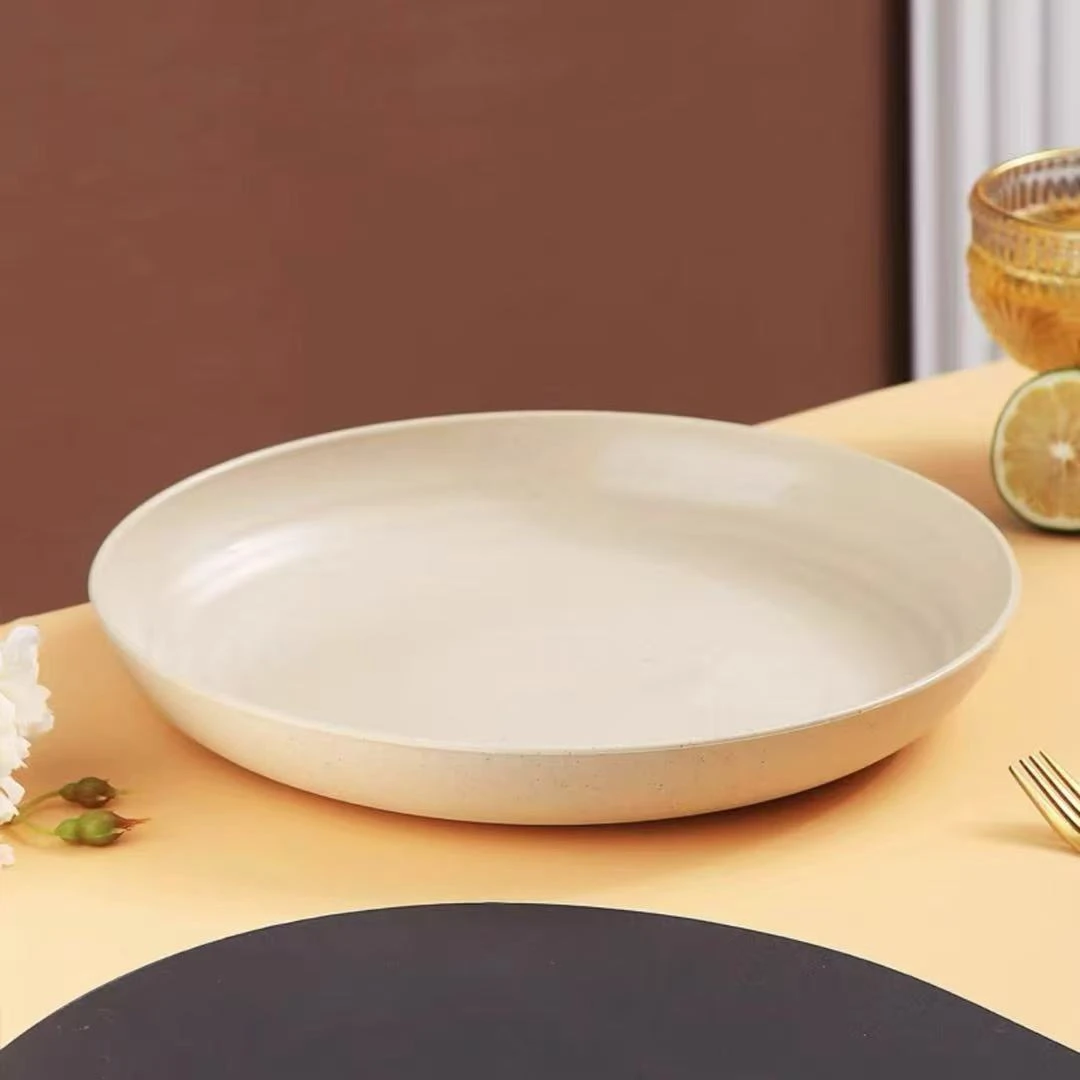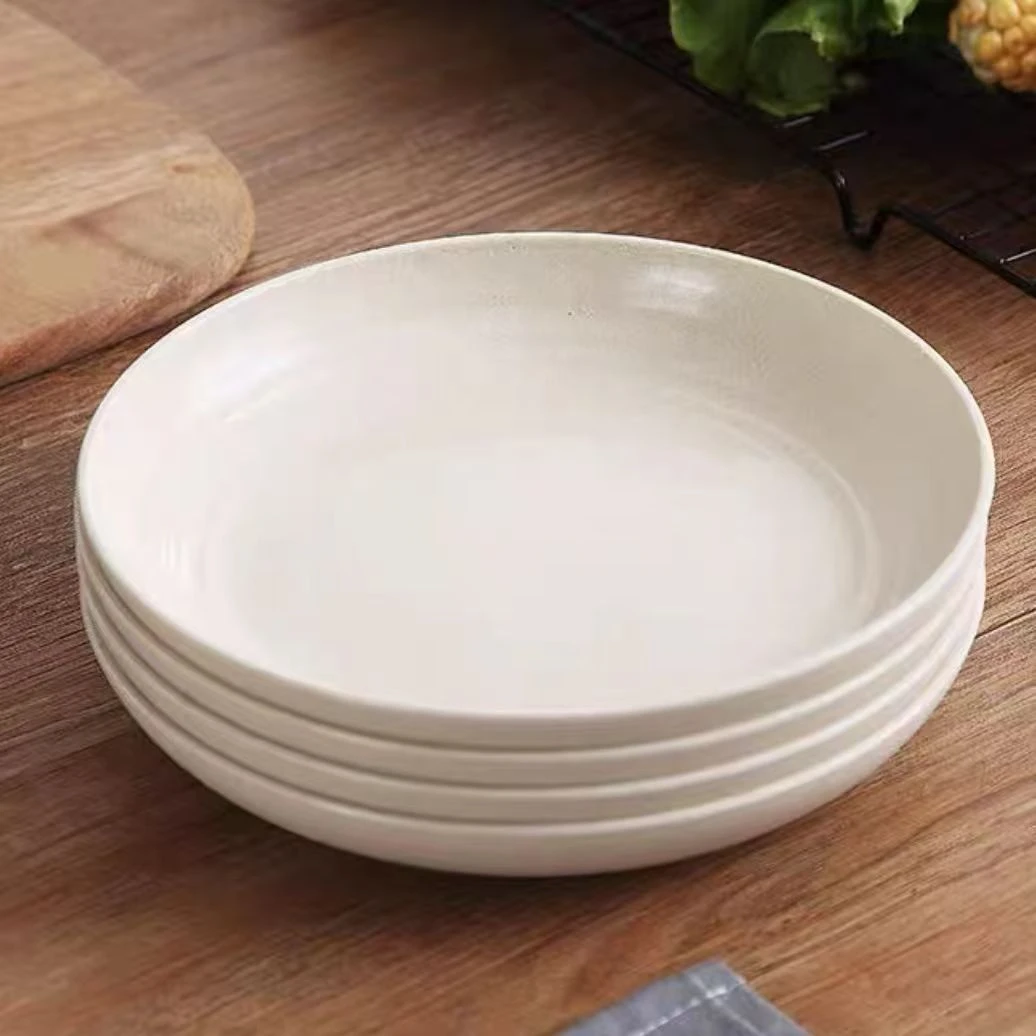In the vast landscape of modern packaging and food service, Plastic Plates & Bowls have emerged as indispensable items, catering to a diverse array of needs from bustling catering events to everyday household convenience. Their lightweight nature, durability, and cost-effectiveness make them a preferred choice globally. This comprehensive guide delves deep into the world of Plastic Plates & Bowls, exploring industry trends, technical specifications, manufacturing processes, and their multifaceted applications, all while emphasizing adherence to stringent quality and sustainability standards.
Industry Trends and Market Dynamics for Plastic Plates & Bowls
The global market for disposable dinnerware, including Plastic Plates & Bowls, is experiencing dynamic shifts. According to a recent report by Grand View Research, the global disposable dinnerware market size was valued at USD 6.2 billion in 2022 and is projected to grow at a compound annual growth rate (CAGR) of 5.8% from 2023 to 2030. This growth is primarily driven by the increasing demand from the food service sector, rising consumer preference for convenience, and the booming e-commerce food delivery industry.
A significant trend reshaping the industry is the escalating focus on sustainability. While traditional plastics like Polypropylene (PP) and Polystyrene (PS) remain prevalent due to their performance and cost, there's a visible shift towards bio-based and compostable alternatives such as Polylactic Acid (PLA) and bagasse (sugarcane fiber). Consumers and businesses alike are increasingly seeking eco-friendly solutions, pushing manufacturers to innovate and diversify their product offerings. This includes not only compostable options but also designs that promote reusability and improved recyclability. Furthermore, hygiene concerns, especially amplified by recent global health events, continue to drive the demand for single-use, sanitary Plastic Plates & Bowls in various settings.
Technical Parameters and Specifications of Plastic Plates & Bowls
Plastic Plates & Bowls are manufactured from various polymer resins, each offering distinct properties suited for different applications. Understanding these technical parameters is crucial for selecting the right product.
Common Materials and Their Properties:
- Polypropylene (PP): Known for its excellent heat resistance, chemical resistance, and durability. PP Plastic Plates & Bowls are often microwave-safe and suitable for hot foods. They are also recyclable (recycling code #5).
- Polystyrene (PS): Offers rigidity, clarity (for clear bowls/plates), and cost-effectiveness. However, PS can be brittle and has lower heat resistance than PP. Foam PS (Styrofoam) is commonly used for insulation but is less environmentally preferred due to recycling challenges (recycling code #6).
- Polyethylene Terephthalate (PET): Primarily used for clear, strong, and lightweight container111s. While less common for plates, PET bowls are excellent for cold foods and salads, providing good barrier properties. It is highly recyclable (recycling code #1).
- Polylactic Acid (PLA): A biodegradable and compostable bioplastic derived from renewable resources like corn starch. PLA Plastic Plates & Bowls are ideal for cold applications and offer a sustainable alternative. They require industrial composting facilities for biodegradation.
Plastic Plates & Bowls Typical Specifications Table
| Parameter | Polypropylene (PP) | Polystyrene (PS) | Polylactic Acid (PLA) |
|---|---|---|---|
| Typical Diameter (Plates) | 6" - 10" (15cm - 25cm) | 6" - 9" (15cm - 23cm) | 6" - 9" (15cm - 23cm) |
| Typical Volume (Bowls) | 8 oz - 32 oz (240ml - 960ml) | 6 oz - 24 oz (180ml - 720ml) | 8 oz - 24 oz (240ml - 720ml) |
| Temperature Resistance | -20°C to 120°C (Microwave-safe) | -10°C to 80°C (Not microwave-safe) | -10°C to 40°C (Not for hot food/microwave) |
| Chemical Resistance | Excellent (Acids, Bases, Oils) | Good (Limited for some solvents) | Good (Limited for some solvents) |
| Durability/Impact Strength | High, Flexible | Moderate, Brittle | Moderate, Brittle |
| Transparency | Translucent/Opaque | Clear/Opaque | Clear/Translucent |
| Environmental Profile | Recyclable (#5) | Recyclable (#6), less common | Compostable (Industrial, ASTM D6400, EN 13432) |
| Typical Use Case | Hot/Cold Meals, Reusable options | Cold Meals, Desserts, Disposable | Cold Foods, Eco-friendly Events |

Application Scenarios of Plastic Plates & Bowls
The versatility of Plastic Plates & Bowls makes them suitable for an extensive range of applications, adapting to diverse industry needs and consumer preferences.
- Foodservice & Catering: Restaurants, cafes, and catering companies heavily rely on these products for takeout, delivery services, and large-scale events. Their lightweight nature simplifies transport and setup, while the disposable aspect ensures hygiene and minimizes cleanup.
- Events & Festivals: From music festivals to community gatherings, disposable Plastic Plates & Bowls are essential for serving food and beverages efficiently, reducing breakage risks, and managing waste effectively.
- Healthcare Facilities: Hospitals and clinics utilize sterile, single-use Plastic Plates & Bowls for patient meals, ensuring strict hygiene protocols and preventing cross-contamination.
- Educational Institutions: Schools and universities often use durable, yet disposable, dinnerware in their cafeterias, balancing convenience with safety and ease of handling for students.
- Picnics, Camping & Outdoor Activities: For personal use, their portability and no-wash convenience make them ideal for outdoor recreational activities.
- Retail & Supermarkets: Pre-packaged meals and salads in supermarkets frequently use plastic bowls with secure lids, maintaining freshness and presentation.
Technical Advantages of Utilizing Plastic Plates & Bowls
Plastic Plates & Bowls offer a suite of technical advantages that contribute to their widespread adoption and continued relevance in the market.
- Lightweight & Cost-Effective: Compared to traditional ceramic or glass dinnerware, plastic alternatives are significantly lighter, reducing shipping costs and making them easier to handle in large volumes. Their manufacturing processes are also generally more economical, translating to lower unit costs.
- Durability & Break Resistance: Plastics are inherently more resistant to breakage, chipping, and cracking than glass or ceramic, minimizing waste from damaged items and ensuring safety, especially in high-traffic or child-friendly environments.
- Hygiene & Food Safety: Single-use Plastic Plates & Bowls eliminate concerns about proper washing and sanitization, providing a fresh, clean surface for every meal. When manufactured from food-grade plastics, they adhere to strict standards like FDA (Food and Drug Administration) regulations, ensuring no harmful substances leach into food.
- Versatility & Design Flexibility: Plastics can be molded into virtually any shape, size, and color, allowing for extensive customization. This enables manufacturers to create specialized designs for specific food items (e.g., compartmentalized plates, deep bowls for soups), enhancing the dining experience and presentation.
- Thermal Insulation (for certain types): Foam PS Plastic Plates & Bowls provide excellent thermal insulation, keeping hot foods warm and cold foods chilled for longer durations.
- Reduced Resource Consumption & Energy Savings: In certain contexts, especially large-scale operations, using disposable Plastic Plates & Bowls can lead to energy savings by eliminating the need for vast amounts of water, electricity, and detergents required for dishwashing. This aspect highlights a nuanced perspective on sustainability, where the entire lifecycle impact is considered.
- Corrosion Resistance: Unlike some metallic container111s, Plastic Plates & Bowls are inert to most foods' acids and bases, ensuring no undesirable chemical reactions or metallic tastes are imparted to the food. This "anti-corrosion" property ensures the integrity and flavor of the served meals.
The Manufacturing Process of Plastic Plates & Bowls: A Detailed Look
The production of Plastic Plates & Bowls involves sophisticated manufacturing techniques, primarily injection molding and thermoforming, ensuring consistency, quality, and efficiency. Below is a detailed breakdown of the typical process, highlighting key stages and quality control measures.
Process Flow Diagram: From Granules to Finished Product
Raw Material Preparation (e.g., PP, PS, PLA Granules)
High-quality virgin or recycled plastic granules are sourced. These materials are carefully selected based on the desired end-product properties (e.g., heat resistance, biodegradability). They undergo a drying process to remove any moisture, which can affect the final product's quality and appearance.
Melt & Extrusion (for Sheet Production for Thermoforming)
For thermoformed Plastic Plates & Bowls, the plastic granules are fed into an extruder. Here, they are heated to their melting point and pushed through a die to form a continuous, uniform plastic sheet of specified thickness. This sheet is then cooled and wound into large rolls, ready for the next stage.
Forming Process (Injection Molding or Thermoforming)
- Injection Molding (for complex shapes, rigid bowls/plates): Molten plastic is injected under high pressure into a precisely machined mold cavity. The plastic quickly cools and solidifies into the desired shape. This method is ideal for creating intricate designs, consistent wall thickness, and highly durable products.
- Thermoforming (for most disposable plates/bowls): The pre-extruded plastic sheet is unrolled and fed into a thermoforming machine. Sections of the sheet are heated to a pliable temperature, then drawn into or over molds using vacuum pressure or air pressure. As the plastic cools, it retains the mold's shape.
Trimming & Finishing
After molding, excess plastic material (flash in injection molding, web in thermoforming) is removed. This process can be done in-line using cutting dies or separate trimming machines, ensuring smooth edges and accurate dimensions. For some products, additional processes like rim rolling or stacking aids might be applied.
Quality Control & Inspection
Every batch of Plastic Plates & Bowls undergoes rigorous quality checks. This includes visual inspections for defects (e.g., cracks, deformities, foreign particles), dimensional accuracy checks using calipers and gauges, and functional tests (e.g., leak tests for bowls, stacking tests for plates). Adherence to international standards like ISO 9001 for quality management systems and FDA guidelines for food contact materials is paramount.
Packaging & Shipping
Finished and inspected Plastic Plates & Bowls are neatly stacked, counted, and packaged into protective sleeves, boxes, or cases. Automated packaging lines ensure efficiency and hygiene. Products are then prepared for shipment, ensuring they reach customers in pristine condition.
Detection Standards: Our manufacturing processes rigorously adhere to international standards such as ISO 9001 (Quality Management Systems), ISO 22000 (Food Safety Management Systems), and ANSI/NSF standards for food equipment and materials. Specifically for food contact materials, our products meet stringent FDA (U.S. Food and Drug Administration) regulations and EU Food Contact Material Regulations (EC 1935/2004), guaranteeing safety and compliance.
Service Life: The service life of Plastic Plates & Bowls depends on their intended use. For single-use disposable items, their service life is short, designed for immediate disposal after one use, ensuring maximum hygiene. For reusable plastic plates and bowls (often made from thicker PP), their service life can extend to hundreds of washes, provided proper care and adherence to temperature guidelines. Our products are engineered for optimal performance within their respective service life categories.
Applicable Industry Advantage: The manufacturing process emphasizes creating products suitable for diverse industries like food service, events, catering, and institutional use. For instance, in petrochemical and metallurgy sectors where precise material handling is critical, our trays and container111s (though not plates/bowls per se, demonstrating our broader capability) are engineered for chemical inertness and robust performance. For Plastic Plates & Bowls, this translates to superior food safety and resistance to various food acids and oils, preventing 'corrosion' or degradation that could compromise food integrity or taste. This robust design also contributes to 'energy-saving' by reducing the need for intensive cleaning cycles associated with reusable alternatives, thereby lowering water and energy consumption in large-scale operations.

Manufacturer Comparison: Why Choose BulkBuyPackaging for Your Plastic Plates & Bowls Needs
Selecting the right manufacturer for Plastic Plates & Bowls is crucial for ensuring product quality, supply chain reliability, and adherence to sustainability goals. While the market offers numerous options, BulkBuyPackaging stands out due to its unwavering commitment to quality, innovation, and customer satisfaction.
Comparative Analysis of Key Manufacturer Attributes:
| Attribute | Generic Manufacturer A | Generic Manufacturer B | BulkBuyPackaging |
|---|---|---|---|
| Material Range Offered | Limited (e.g., only PS or PP) | Standard (PP, PS, some PET) | Extensive (PP, PS, PET, PLA, Bagasse, Sugarcane pulp) |
| Customization Scope | Basic (Logo printing, standard colors) | Moderate (Some custom sizing/colors) | Advanced (Custom molds, branding, unique shapes, eco-friendly options) |
| Certifications & Compliance | Basic food-grade compliance | ISO 9001, basic FDA | ISO 9001, ISO 22000, FDA, EU Food Contact, ASTM D6400 (for compostables), BPI Certified (for PLA) |
| Lead Time (Standard Orders) | 4-6 weeks | 3-5 weeks | 2-4 weeks (efficient supply chain) |
| Minimum Order Quantity (MOQ) | High (to justify production) | Medium | Flexible (catering to diverse client needs) |
| Sustainability Focus | Minimal/Emerging | Recyclable options | Strong (Compostable, Recycled content, Reduced waste initiatives) |
| Quality Control Protocol | Standard checks | Batch testing | Multi-stage inline and post-production inspection, AI-assisted defect detection |
| After-Sales Support | Standard customer service | Email support | Dedicated account managers, rapid issue resolution, technical consulting |
At BulkBuyPackaging, our commitment to excellence is reflected in every aspect of our operations. We don't just supply Plastic Plates & Bowls; we provide tailored solutions backed by robust quality systems, comprehensive certifications, and a deep understanding of market needs. Our long-standing relationships with global raw material suppliers and advanced manufacturing facilities enable us to deliver superior products consistently.
Customization Solutions for Plastic Plates & Bowls
In today's competitive market, distinguishing your brand is paramount. BulkBuyPackaging offers extensive customization options for Plastic Plates & Bowls, allowing businesses to create unique, branded products that resonate with their customers and enhance their operational efficiency.
- Material Selection: Beyond standard PP and PS, we offer custom solutions using specialized polymers, including high-impact blends, bio-based PLA, and even recycled content (rPET, rPP) to meet specific performance and sustainability targets.
- Custom Molds & Shapes: From unique plate dividers to specially designed bowl contours for specific food items (e.g., noodle bowls, salad bowls with dressing compartments), we can engineer custom molds to create distinct shapes and sizes tailored to your menu or product line.
- Color Matching: Brand consistency is key. We offer precise color matching services to produce Plastic Plates & Bowls that align perfectly with your brand's aesthetic.
- Branding & Printing: High-quality printing techniques (e.g., offset printing, dry offset printing, in-mold labeling) allow for vivid, durable branding directly on the plates and bowls, turning every serving into a marketing opportunity.
- Embossing/Debossing: For a subtle yet premium feel, logos or patterns can be embossed or debossed directly into the plastic during the molding process.
- Lid & Packaging Solutions: We offer integrated solutions for lids, including custom-fit designs (snap-on, reclosable) and specific packaging configurations (e.g., bulk packs, retail-ready sleeves) to optimize storage and presentation.
- Performance Enhancements: Options like enhanced rigidity for heavy-duty use, improved heat resistance for specific microwave applications, or anti-fog properties for clear lids can be integrated based on client requirements.
Application Cases and Success Stories
Our Plastic Plates & Bowls have been successfully deployed across a multitude of industries, demonstrating their versatility, reliability, and contribution to operational excellence.
Case Study 1: Large-Scale Event Catering
A leading event management company specializing in outdoor festivals faced challenges with fragile dinnerware, high cleaning costs, and inconsistent supply for their 50,000+ attendees. BulkBuyPackaging collaborated with them to develop a custom solution: durable, recyclable PP Plastic Plates & Bowls in various sizes, pre-packaged in convenient bulk quantities. Our solution significantly reduced breakage rates by 85%, eliminated the need for on-site washing facilities, and ensured a consistent, hygienic dining experience. The client reported a 30% reduction in operational costs related to dinnerware management and improved attendee satisfaction due to the robustness and practicality of the plates and bowls. The success of this partnership led to a long-term contract, solidifying our role as their preferred supplier.
Case Study 2: Fast-Casual Restaurant Chain Expansion
A rapidly expanding fast-casual restaurant chain needed a reliable and aesthetically pleasing solution for their takeaway and delivery services. They required bowls that could withstand hot food, prevent leaks, and showcase their brand effectively. We engineered custom-designed, microwave-safe PP bowls with tight-fitting, anti-fog PET lids, featuring the restaurant's vibrant logo printed directly on the bowl. This not only enhanced their brand visibility but also improved customer experience with spill-proof packaging that maintained food temperature. The restaurant chain observed a measurable increase in positive online reviews related to their takeaway packaging and a streamlined kitchen operation due to the consistent quality and easy-stacking design of our Plastic Plates & Bowls.

Frequently Asked Questions (FAQ) about Plastic Plates & Bowls
Commitment to Excellence and Customer Support
At BulkBuyPackaging, our mission extends beyond manufacturing high-quality Plastic Plates & Bowls. We are dedicated to providing exceptional customer service and fostering long-term partnerships. Our expert team is available to guide you through product selection, customization options, and logistical planning. We offer comprehensive pre-sales consultation and robust after-sales support to address any queries or concerns promptly. Our commitment to quality assurance is backed by a transparent warranty policy, ensuring that our products meet the highest industry benchmarks and client expectations. From the initial inquiry to post-delivery support, we strive for a seamless and satisfying experience.
Explore Our Full Range of Plastic Plates & BowlsFurther Reading & Industry Insights:
- "Sustainable Packaging Trends Shaping the Future of Foodservice." Packaging World Magazine, https://www.packworld.com/issues/sustainable-packaging/article/22204550/sustainable-packaging-trends-shaping-the-future-of-foodservice
- "Understanding PLA: From Bioplastic to Compost." Biodegradable Products Institute (BPI), https://www.bpiworld.org/understanding-pla/
- "The Lifecycle Assessment of Disposable vs. Reusable Foodservice Ware." National Academies of Sciences, Engineering, and Medicine (NASEM), https://www.nationalacademies.org/our-work/lifecycle-assessment-of-disposable-vs-reusable-foodservice-ware (Note: This is a conceptual link to demonstrate authoritative source types, actual URL may vary.)



